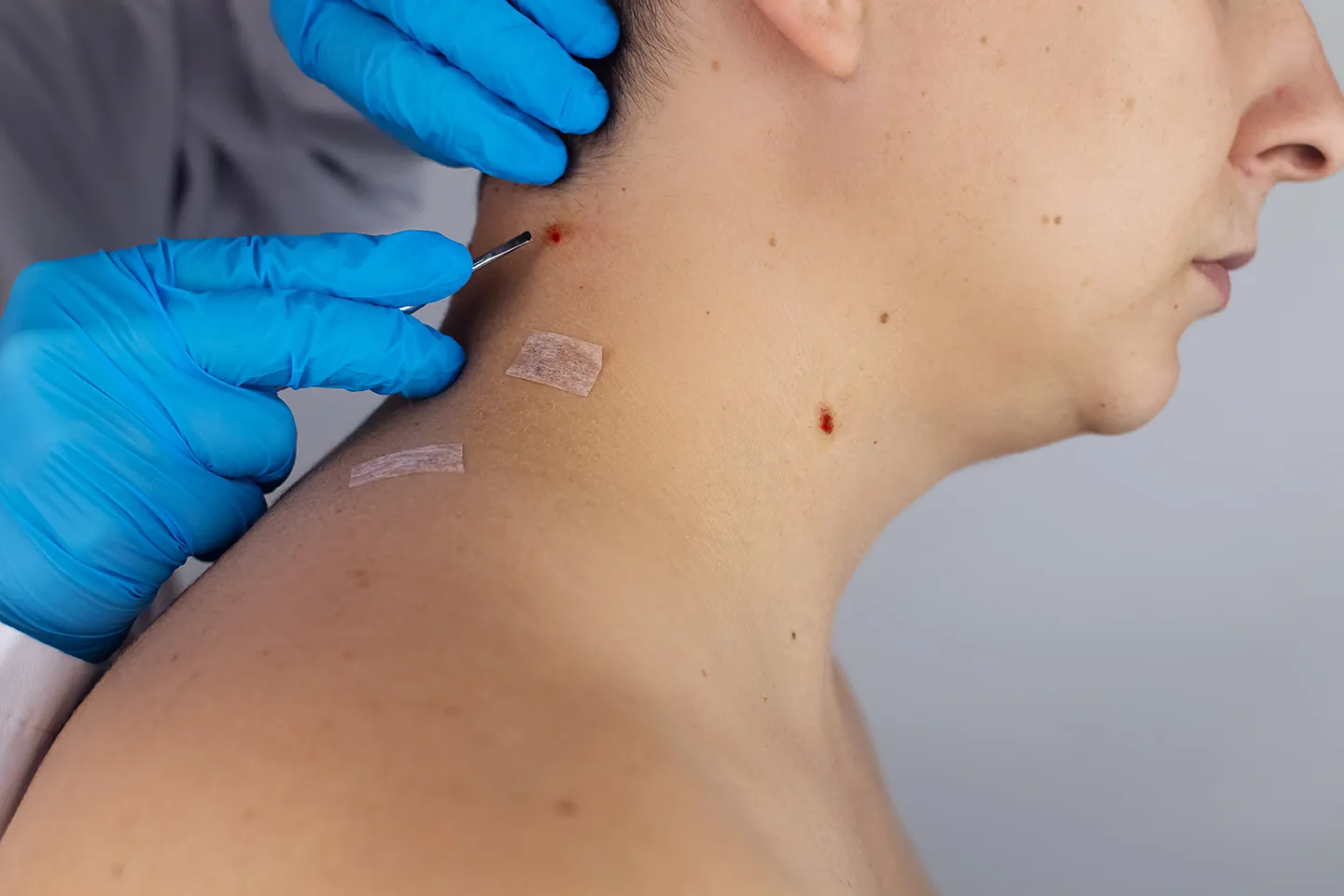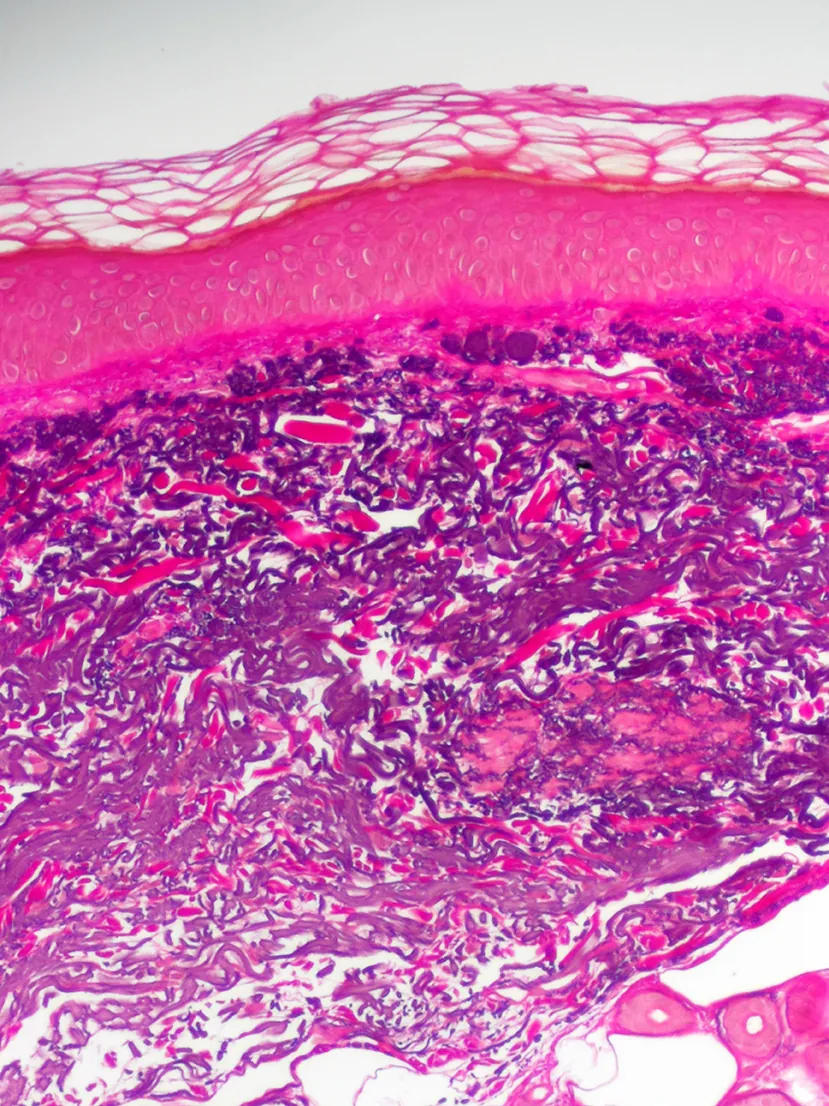Excision of Skin Lesions
Schedule Your Consultation What is Excision of a Skin Lesion?
What is Excision of a Skin Lesion?
Excision is a minor surgical procedure that involves completely removing a skin lesion using a scalpel. It’s often recommended for growths that are suspicious, changing, painful, or unwanted, including moles, cysts, lipomas, and skin cancers.
The goal is to remove the entire lesion, along with a small margin of healthy tissue, to reduce the risk of recurrence while preserving the surrounding skin’s appearance. In most cases, the excised tissue is sent to a pathology lab for microscopic analysis to confirm the diagnosis and guide further care, if needed.
Conditions Commonly Treated with Excision
We use excision to treat a variety of skin growths and lesions, including:
- Moles (Nevi), especially those that change in shape, size, or color
- Basal cell carcinoma, the most common type of skin cancer
- Squamous cell carcinoma, which can require wider excision to ensure full removal
- Melanoma, which often involves deeper excision and close pathology follow-up
- Cysts and lipomas, which are non-cancerous lumps that can become painful or infected
- Dermatofibromas, angiomas, and other benign lesions, which are removed when bothersome or cosmetically undesirable
What to Expect During the Procedure
We perform excision procedures right in our New Brighton office under local anesthesia. Once the area is numb, your provider will surgically remove the lesion using a scalpel, carefully including a margin of normal skin to ensure complete excision.
Depending on the size and depth of the lesion, the area may be closed with stitches or left to heal naturally. Most procedures take between 20 and 45 minutes, and you’ll be able to go home shortly afterward. The removed tissue is sent to a dermatopathology lab for diagnostic confirmation.
Aftercare & Healing
Proper aftercare helps support both optimal healing and long-term cosmetic results. After your procedure, we’ll provide detailed instructions, which typically include:
- Keeping the area clean and dry
- Applying prescribed ointments or using protective bandages
- Returning in 7-14 days for suture removal (if applicable)
- Monitoring for normal healing responses like mild swelling, bruising, or tenderness

Most scars improve over time. We may recommend sunscreen, silicone-based scar creams, or follow-up treatments to further minimize their appearance.
Benefits of Lesion Excision
Excision can be advantageous for both health and appearance. Benefits include:
- Complete removal of suspicious or bothersome skin lesions
- Pathology confirmation of benign or cancerous nature
- Low recurrence risk with proper margins
- Procedure performed by a board-certified dermatologic surgeon
- Can significantly improve the cosmetic appearance of skin
Risks and Considerations
While excision is a safe and routine procedure, it’s important to be aware of potential (and typically minor) risks, including:
- Minor bleeding or infection
- Scarring, which often improves with time, proper wound care, or scar treatments
- Temporary pigmentation changes
- Rare cases of incomplete removal that may require additional treatment
Following up with your healthcare provider is important, especially for lesions with uncertain or cancerous features.
Frequently Asked Questions
No. We use local anesthesia to completely numb the area. It’s normal to feel mild pressure, but you shouldn’t experience any pain during the procedure.
Yes, but we take great care to minimize scarring through precise surgical technique and proper closure. In most cases, scars fade substantially over time or with treatment.
If you have a lesion that is changing, painful, growing, or cosmetically bothersome, it’s a good idea to have it evaluated. Depending on what your dermatology team finds, excision may be recommended.
Most pathology results are available within 7-10 days. Once we receive the results, we’ll contact you with the findings and next steps, if any.
Yes, most patients can return to normal activities immediately after the procedure. However, we may advise avoiding strenuous activities for a few days.
That’s something we’ll determine during your evaluation. Some lesions can be shaved or biopsied first, whereas others require full excision based on size, location, or suspicion of malignancy.
The Importance of Pathology Review
After a skin lesion is excised, the removed tissue is sent to a board-certified dermatopathologist—a specialist trained in diagnosing skin disorders under a microscope. This histopathologic analysis confirms the exact nature of the lesion, whether benign, precancerous, or malignant.
Pathology review also verifies whether the lesion was completely removed and helps guide any necessary follow-up care. This step is essential for accurate diagnosis, treatment planning, and long-term skin health.
Excision vs. Other Removal Methods
Excision is just one method of skin lesion removal. Other possible options include:
- Shave Removal: Removes only the surface of the lesion; no stitches, but less thorough
- Cryosurgery: Freezes and destroys superficial lesions; no tissue sent to pathology
- Electrosurgery: Uses electric current to burn off small benign lesions
- Mohs Surgery: Preferred for skin cancers in cosmetically sensitive areas, offering same-day pathology and high cure rates
Excision is best for deeper lesions or those needing complete removal with lab confirmation.
Schedule Your Skin Lesion Evaluation
If you’ve noticed a new or changing skin growth—or have a mole, bump, or spot that’s bothering you—it’s important to get it checked. Early evaluation and removal can help prevent complications and provide lasting peace of mind.
Book your appointment with Clarus Dermatology today and let our expert team guide you with care, clarity, and precision.